4.9 1890+ Google Reviews
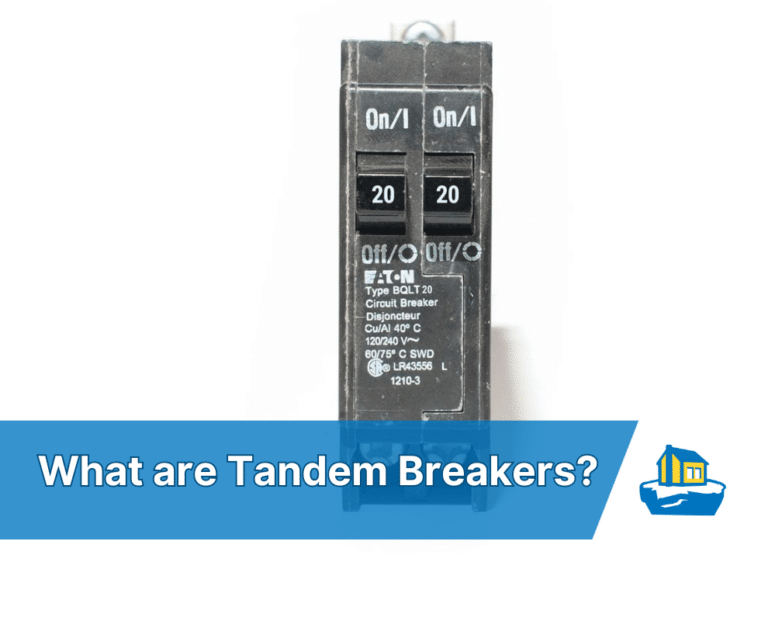
What are tandem breakers? Tandem circuit breakers are particular kinds of circuit breakers that take up the size of one standard breaker, but allow the installation of two separate circuits. Sometimes they are two half-sized breakers that take up the space of a single circuit breaker.
Tradesmen may call them wafer breakers, twin breakers, or even cheater breakers. They can be useful when adding circuits to a “full” panel. However, they are not allowed in all panels.
The simple answer is to read the label. Every electrical panel is different, and each has its instructions. The National Electrical Code (NEC) states
110.3 “Equipment must be installed and used in accordance with any instructions included in the listing or labeling requirements”
It is not always easy to read and decipher an electrical panel label though, so I will try to break it down barney style.
The photo below is a diagram of a Crouse-Hinds electrical panel. You will notice that the top eight rectangles (4 on each side) do not have a line through the middle, and the bottom 16 do have a line through the middle.
The key to left is titled ” DIAGRAM INDICATES MAXIMUM NUMBER OF INSTALLED CIRCUIT BREAKER POLES”. For the blank rectangle it says “1-1″ or 1 1/2″ position”. The rectangle with the line through the middle of it says ” 1 – 1″ OR 2 1/2″ positions”
In plain english, it means the blank rectangles only allow single breakers, and the rectangles with the line allow a single tandem breaker. This panel allows tandem breakers, but only in specific spots. If there tandem breakers in the upper 8 positions, then this could cause loose connections and arcing which is a fire hazard.
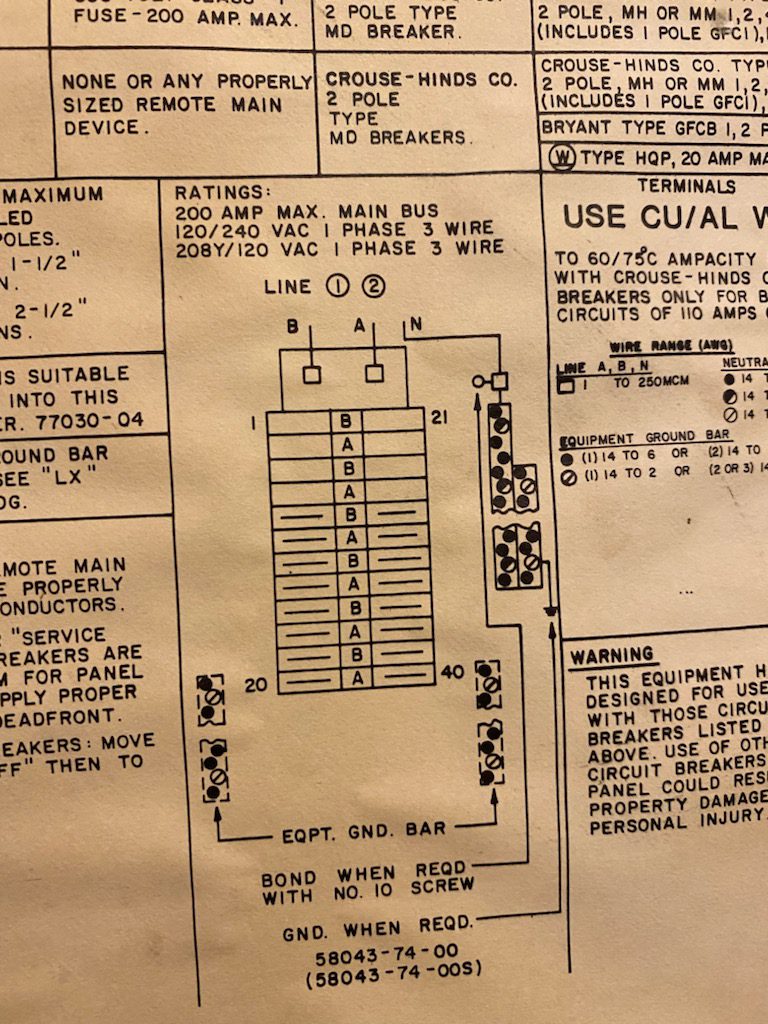
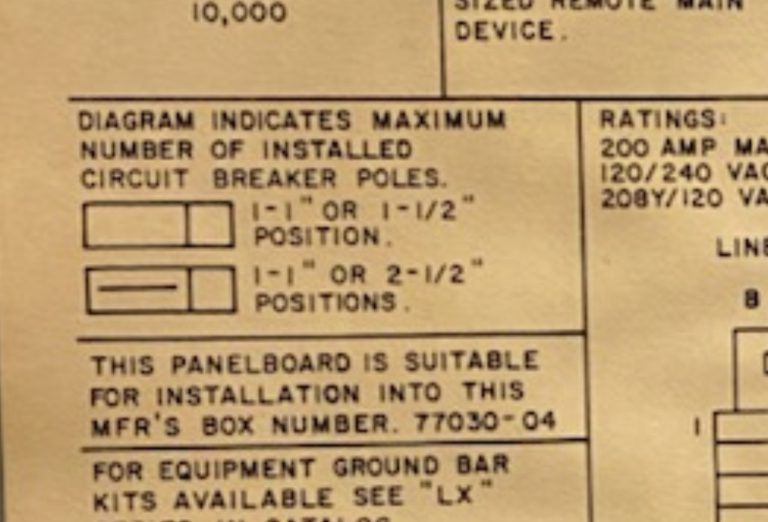
This label is a little different. Down the middle of the diagram you can see what look like “E’s” and “F’s”. The wiring diagram legend shows the E’s allow “1 NA or 2 NC Breaker poles”. The F’s allow “1 NA, or 1 NC Breaker Pole”. This particular manufacturer, Federal Pacific, has NA breakers which are full size breakers, and NC breakers are half sized breakers.
Again, you will notice that some positions allow the tandem breakers, and some don’t.
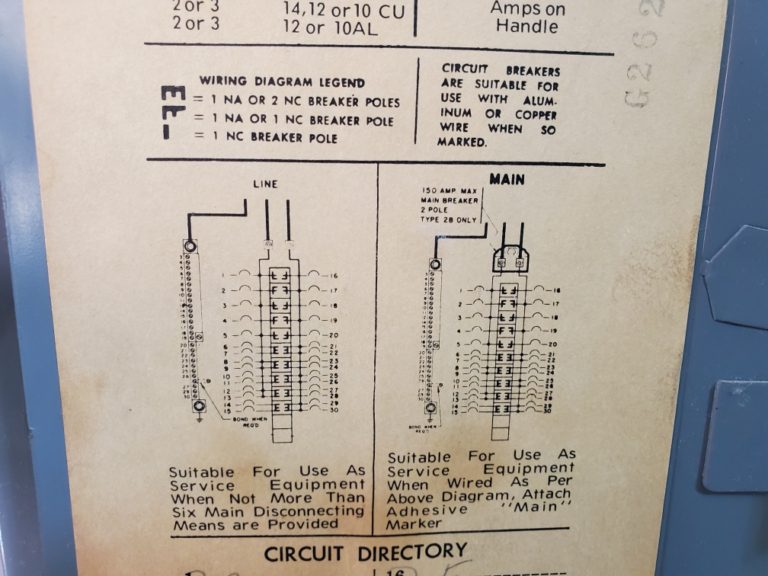
This diagram is similar to the first label. Instead of a solid line, several of the boxes have dashes through the middle. As seen below the diagram this ” signifies duplex type breaker”.
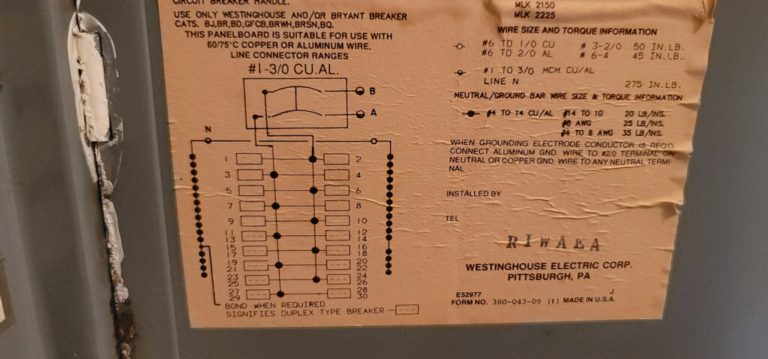
Sometimes the label requires you to look at the bus bar as in the video below. The only option is to remove the breaker and examine the stabs. Although this is way beyond the scope of a home inspection, but I am very comfortable removing and replacing breakers.
Although a slot may be approved for tandem breakers, there are times when a tandem breaker would still be inappropriate. For example, a multi-wire branch circuit can not be installed on a single tandem breaker. I have covered MWBC’s in depth in this blog.
The short of it is that MWBC breakers must originate from opposite bus bars (or different poles). Each residential panel has two bus bars powered from L1 and L2 (the main hot wires).
When both circuits originate from the same line (same bus bar) the current running through the neutral will be the sum of both circuits. When both circuits originate from opposite phases (different bus bar) the current running through the neutral will be difference of both circuits.
An MWBC on a tandem 15-amp breaker, can have up to 30 amps going through the neutral which would cause the insulation to melt, and then potentially an arc fire.
There are currently no AFCI models (arc fault circuit interrupter), or GFCI models(ground fault circuit interrupter) available in a tandem style. These functions only come in full sized breakers. If you add an extra circuit to an older home, it needs to be up to current code requirements. Almost all 120-volt circuits require AFCI protection now, so tandems would not be an option.
This also affects new construction. Even though there are panels made that allow tandems in all slots, it would be rare to see any tandems since most circuits require AFCI.
Even though a tandem is allowed additional circuit breakers added to a panel, also need to be the correct brand and type. We have written about this extensively here.
Essentially, every circuit breaker box allows certain brands and types of breakers. Most only allow their own brand. Using the wrong brand, or type is similar to using a tandem breaker where not allowed. It can cause loose connections, arcing, and fires.
You may hear home inspectors or trades people refer to tandems as double-pole breakers. This is not the case though. A double pole breaker is a breaker that is on two poles. Every residential breaker box has two hot wires coming in to the panel at 120 volts. Each wire is connected to one pole. When you connect a circuit to both poles, that is a 240-volt circuit.
A tandem breaker is installed in a single slot, and is only on one pole. They are single-pole breakers that provide 120 volts to two different circuits.
I am not fan of this method as it is not reliable. However, the label will tell you the number of total circuits allowed in the panel. You can compare this to the number of total slots in the panel. If the panel allows 30 circuits and there are 20 slots, then it likely allows some tandems.
As shown above though, older panels only allow tandems in certain slots. If you use this method to determine if tandems are allowed, you still won’t know where tandems are allowed.
Tandem breakers allow the installation of two circuits, in the space of one breaker slot. This can be useful when your existing panel has no more available slots. You can replace a standard circuit breaker with a tandem to add your new circuit.
However, not all panels allow tandems, and panels that do sometimes limit where they can be installed. The label on the panel cover will have the information you need. The main danger of using tandems where they aren’t allowed is potentially starting a fire.
And there you have it. That is the full answer .